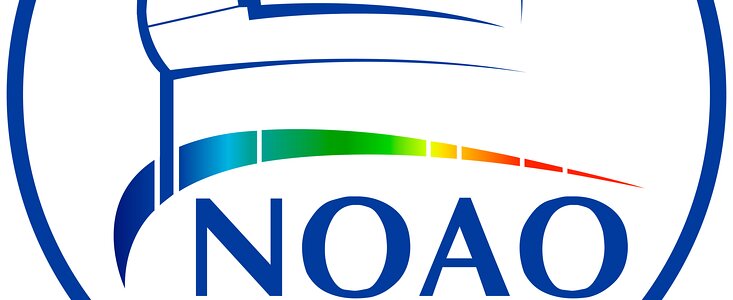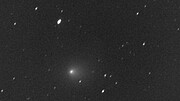Kitt Peak Visitor Center to Provide Live Images of Comet Impact
30 June 2005
How can you watch the planned first-of-its-kind collision between a comet and a spacecraft from Earth this weekend, even if your night skies don’t allow a direct view?
The Visitor Center at Kitt Peak National Observatory plans to offer a live feed of the encounter between NASA’s Deep Impact mission and Comet Tempel 1 starting this Sunday night (local time), running about an hour before the planned 10:52 p.m. PDT impact though about 45 minutes afterward. The feed will consist of still images of the distant comet, and a frequently updated movie assembled from the individual frames. Each frame will consist of a 30-second exposure taken with an electronic CCD imager attached to the 20-inch Ritchey-Chretien telescope in the Kitt Peak Visitor Center observatory.
The comet feed from Kitt Peak will be available on the Internet at: www.noao.edu/news/deep-impact
“Weather and technical gremlins permitting, we intend to post an image about every 45 seconds, and to update the digital movie every few minutes,” said Douglas Isbell, assistant director for public affairs and educational outreach for the National Optical Astronomy Observatory (NOAO) in Tucson, AZ, the parent organization of Kitt Peak National Observatory. “This rate of imagery should match up well with the predicted gradual change in the brightness of the comet’s surrounding cloud of dust and gas.”
The live feed will be generated by synchronized computer teamwork between Kitt Peak Public Outreach Lead Observer Adam Block and NOAO Web Designer Mark Newhouse.
The main Deep Impact spacecraft will witness the effects of the collision between the comet and a copper-laden impactor probe released earlier from the spacecraft from as close as 310 miles, but ground-based telescopes are considerably farther away. “Unfortunately, with the comet being 83 million miles from Earth, its nucleus is essentially a bright single point in the image, so we won’t have the ability to see the fresh crater that Deep Impact is expected to gouge out of the comet.”
As with most major ground-based astronomical observatories, including NOAO’s Cerro Tololo Inter-American Observatory in Chile, all of the major National Science Foundation research telescopes on Kitt Peak are observing comet Tempel 1 for several nights before and after the planned Deep Impact event. By the night of July 8, Kitt Peak National Observatory telescopes will have been used for 43 nights in 2005 in support of scientific analysis of the planned comet impact.
More information
These research observations will be augmented by a special public program on Kitt Peak for 50 people during the night of the event, which is sold out.
Located 55 miles southwest of Tucson, AZ, Kitt Peak National Observatory is part of NOAO, which is operated by the Association of Universities for Research in Astronomy (AURA) Inc., under a cooperative agreement with the National Science Foundation.
For more information about Deep Impact, visit the mission’s Web sites at deepimpact.umd.edu/ and www.nasa.gov/deepimpact.
Links
- This work is described in previous NOAO press release 05-05.
Contacts
Douglas Isbell
Office of Public Affairs and Educational Outreach National Optical Astronomy Observatory
Tel: 520/318-8230
Email: disbell@noao.edu




